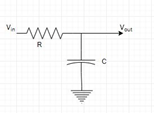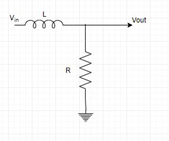This set of Avionics Multiple Choice Questions & Answers (MCQs) focuses on “Filters”.
1. What is a filter?
a) Frequency selective circuit
b) Amplitude selective circuit
c) Frequency damping circuit
d) Amplitude damping circuit
View Answer
Explanation: A filter is a frequency-selective circuit. Filters are designed to pass some frequencies and reject others. Filters are used to reduce noise and increase selectivity.
2. What are filters created by using resistors and capacitors or inductors and capacitors called?
a) Active filters
b) Passive filters
c) Continuous filters
d) Differential filters
View Answer
Explanation: Simple filters created by using resistors and capacitors or inductors and capacitors are called passive filters because they use passive components that do not amplify. In communication work, many filters are of the passive LC variety, although many other types are used.
3. What type of filter produces a predictable phase shift characteristic in all frequencies?
a) Band pass filters
b) High pass filters
c) Low pass filters
d) All pass filters
View Answer
Explanation: An all pass filter passes all frequencies equally well over its design range but has a fixed or predictable phase shift characteristic. Filters normally attenuate the signal applied for some values of frequency whereas an all pass filter retains the signal level at all frequencies.
4. An RC coupling circuit is an example of what type of filter?
a) Low pass filter
b) High pass filter
c) Band pass filter
d) All pass filter
View Answer
Explanation: An RC coupling circuit is an example of a high-pass filter because the AC component of the input voltage is developed across R and the DC voltage is blocked by the series capacitor. Furthermore, with higher frequencies in the AC component, more AC voltage is coupled.
5. What is the type of filter shown in the figure?

a) Low pass filter
b) High pass filter
c) Band pass filter
d) All pass filter
View Answer
Explanation: The simplest form of low-pass filter is the RC circuit shown in the figure. The circuit forms a simple voltage divider with one frequency-sensitive component, in this case, the capacitor. At very low frequencies, the capacitor has very high reactance compared to the resistance and therefore the attenuation is minimum. Thus allowing lower frequencies to pass through while attenuating higher frequency signals.
6. Find the cut off frequency for an RC low pass filter of R=8.2Ω and C=0.0033μF?
a) 6KHz
b) 5.88KHz
c) 4.26KHz
d) 7.91KHz
View Answer
7. What is the type of filter shown in the figure?

a) Low pass filter
b) High pass filter
c) Band pass filter
d) All pass filter
View Answer
Explanation: A low-pass filter can also be implemented with an inductor and a resistor. At very low frequencies, the inductor has very low reactance compared to the resistance and therefore the attenuation is minimum.Thus allowing lower frequencies to pass through while attenuating higher frequency signals.The cutoff frequency is determined by using the formula fco = R/2πL.
8. What is the value of resistor for a high pass RC filter to produce a cutoff frequency of3.4KHz if C = 0.047μF?
a) 654Ω
b) 1000Ω
c) 996Ω
d) 752Ω
View Answer
9. Notch filters and band reject filters are the same.
a) True
b) False
View Answer
Explanation: Notch filters are also referred to as bandstop or band reject filters. Band-reject filters are used to greatly attenuate a narrow range of frequencies around a center point. Notch filters accomplish the same purpose, but for a single frequency.
10. What is the value of notch frequency if the values of resistance and capacitance are 100 kV and 0.02 μF?
a) 79.6Hz
b) 21.5Hz
c) 82.4Hz
d) 40Hz
View Answer
11. What is the loss the filter introduces to the signals in the passband called?
a) passband loss
b) Insertion loss
c) Attenuation
d) Degradation
View Answer
Explanation: Insertion loss is the loss the filter introduces to the signals in the passband. Passive filters introduce attenuation because of the resistive losses in the components. Insertion loss is typically given in decibels.
12. The attenuation rate is also called?
a) Roll off
b) Roll in
c) Envelope delay
d) Ripple
View Answer
Explanation: Roll off is also called the attenuation rate, roll-off is the rate of change of amplitude with frequency in a filter. The faster the roll-off, or the higher the attenuation rate, the more selective the filter is, i.e., the better able it is to differentiate between two closely spaced signals, one desired and the other not.
Sanfoundry Global Education & Learning Series – Avionics.
To practice all areas of Avionics, here is complete set of 1000+ Multiple Choice Questions and Answers.
If you find a mistake in question / option / answer, kindly take a screenshot and email to [email protected]
- Apply for Aerospace Engineering Internship
- Practice Aeronautical Engineering MCQs
- Check Avionics Books
- Check Aeronautical Engineering Books
- Practice Aerospace Engineering MCQs

